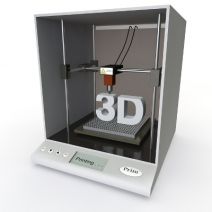Network Synergy Blog
The Pros and Cons of the 3D Printing Boom
Prior to its increase in popularity, 3D printing was struck with a huge spike in hype, followed by a decrease in stock prices, which at first glance would seem like a negative sign for 3D printing. In all actuality, there are still plenty of reasons for people to be excited about 3D printing, particularly due to 3D-printed parts being implemented into end products. For example, cars now feature parts made using 3D-printing. The technology is no longer limited to prototype printing, and is now a viable option for producing end products.
Here are some statistics from a PwC study concerning the implementation speed of 3D printing:
- 31.4 percent of manufacturers are using 3D printing for prototyping, 6.6 are using it for end-product production, and 13.2 percent are using it for both; all three of these figures are considerably higher than they were in 2014.
- 17.4 percent are experimenting with 3D printing - down from 2014, when 28.9 percent claimed to be experimenting with 3D printing.
- 42 percent of manufacturers feel that 3D printing will be used in high-volume production within the next 3-to-5 years.
Even if 3D printing is gradually moving from a novelty to a commodity, it’s important to consider what this new technology can do to the manufacturing industry. For example, will the costs of 3D-printed goods decrease, and will this disrupt the current state of how traditional supply chains work?
There’s even more concern over how 3D printing will affect intellectual property. With demand for 3D printing technologies increasing, the costs will naturally decrease, and the results of this innovation can be seen in a new light. Can 3D-printed goods keep up with the quality and production speed required to meet specific manufacturing goals? These uncertainties are one of the top reasons why organizations are slowly implementing 3D printing - getting their feet wet before diving in head-first.
3D printing is just one example of how new technology solutions are being implemented in a business environment to improve operations. By using the latest and greatest technology solutions, your business can also see a dramatic increase in productivity, efficiency, and return-on-investment. Just like manufacturing companies who are looking to implement 3D printing, you need to do your homework and carefully consider how these new technology solutions can affect your organization.
Network Synergy’s technicians can help you get a grasp on this rather difficult subject. To learn more, reach out to us at (203) 261-2201.




Comments